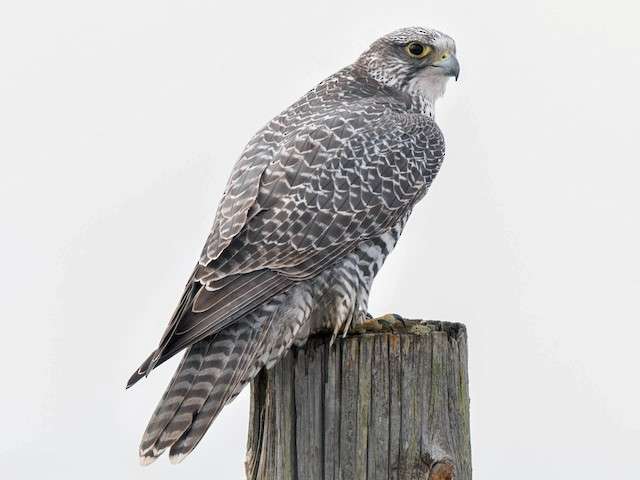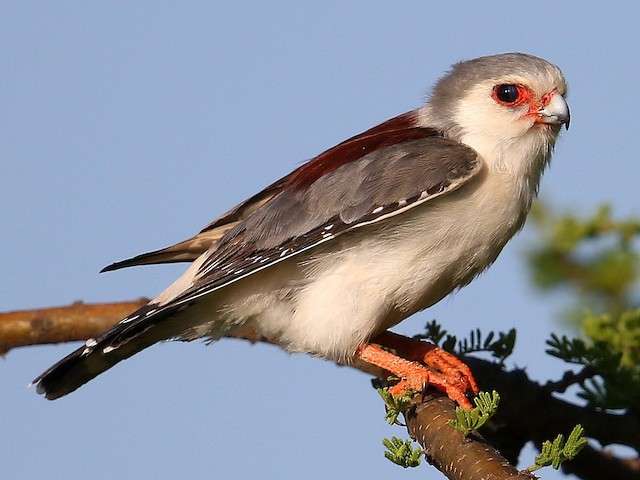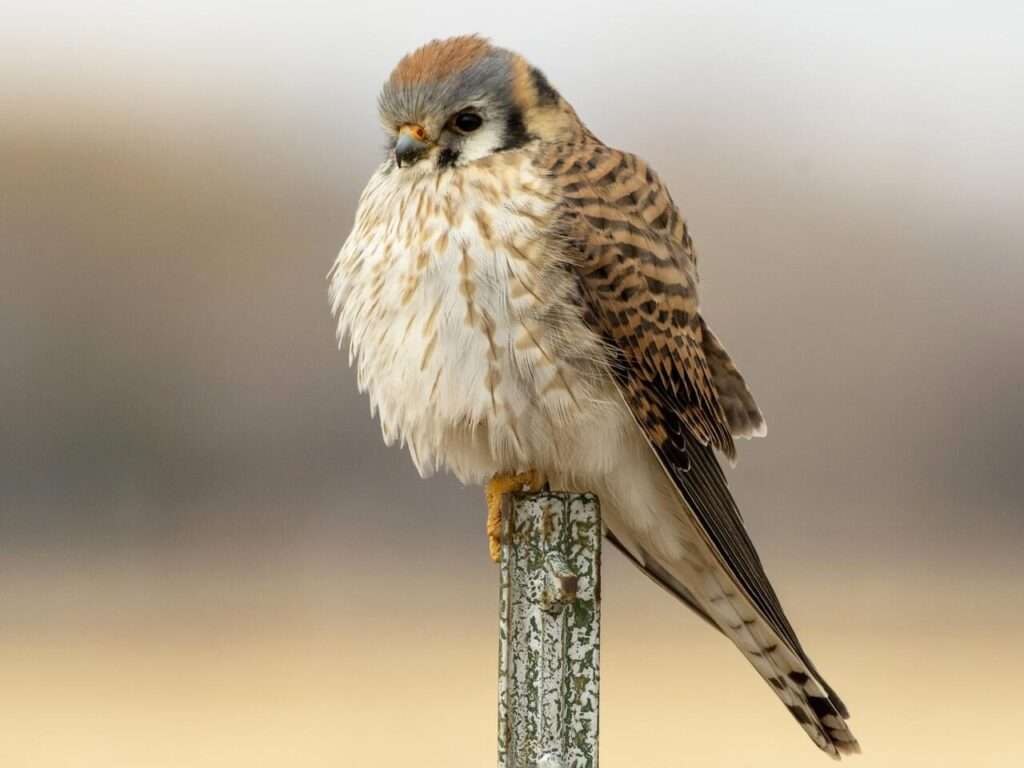
Description
Life span: Up to 20 years
The polymorphic nature of the gyrfalcon causes tremendous variation in its plumage. The morphs’ hues span from completely white to very dark, and they go under the names “white,” “silver,” “brown,” and “black.” The brown gyrfalcon can be distinguished from the peregrine by the cream streaking on its neck and crown, as well as by the absence of a distinct malar stripe and cap. Unlike the peregrine, the black morph’s underside is extensively black-spotted rather than neatly barred. Gyrfalcons in the white form are the only falcons that are primarily white. A larger-sized light grey lanner falcon is similar to a silver gyrfalcon. Juveniles are darker and browner than adults; there are no sex differences in color.

Native Region/Habitat
The Gyrfalcon breeds in northern Canada and Alaska on tundra that is both arctic and alpine, close to seabird or waterfowl nesting colonies, or in regions where ptarmigan are common. Habitats include rocky seashores, offshore islands, rocky outcrops on barren ground, river bluffs, lake bluffs, and hilly terrain up to 5,000 feet in height. In their environment, low-growing plants like sedge, cottongrass, lichen, moss, willow, and birch species can be found. On rare occasions, they will enter the edges of boreal forests or small spruce stands found near beaches or dunes. They will probably abandon the highest latitudes and heights during the winter and may venture as far south as the northern United States. Their normal habitat is open terrain with an elevation of under 3,000 feet.
Behavior
Gyrfalcons appear to mate for life because they spend the most of the year alone or in pairs. The male does breathtaking aerial feats, including rolls and dives. They guard a region that is almost a mile wide around their cliffside nest, typically 3 to 60 miles away from the next pair. Both the male and female may chase and attack intruders like Common Ravens, Rough-legged Hawks, and Peregrine Falcons during breeding or non breeding seasons. Additionally, they can lock talons with intruders, which could cause two warriors to tumble to the ground still bound together. Gyrfalcons may be attacked by little songbirds. When stooping for prey, they may swoop at up to 130 miles per hour thanks to their extremely swift flight.
As a pet/In captivity
Gyrfalcons require a lot of area to fly freely, so they are not a suitable choice as pets. Gyrfalcons cannot be kept as pets, however some falconers have kept a handful of them for many years.
Table





